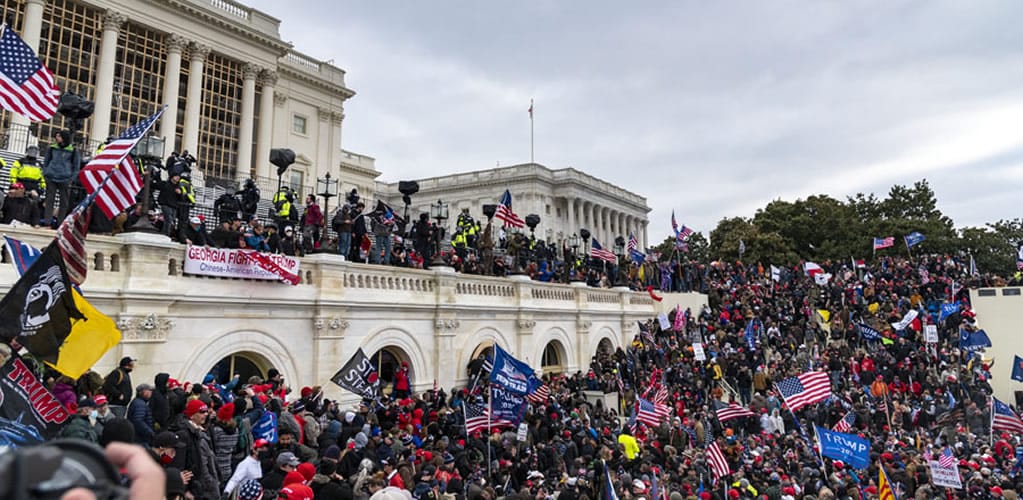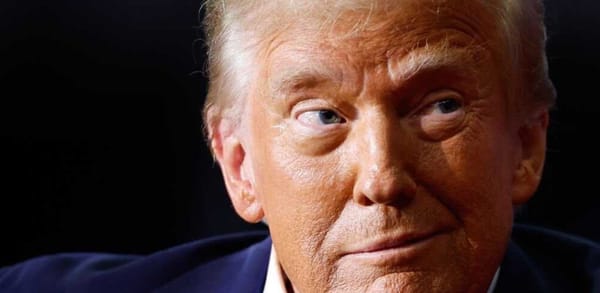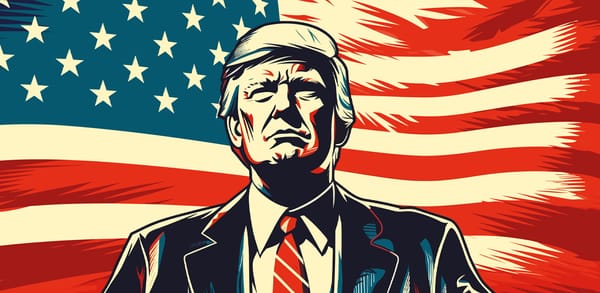Capitol assault: The real reason Trump and the crowd almost killed US democracy.
The moment that could have brought US democracy to its knees on January 6, 2021 was a genuine co-production between Trump and his supporters.

The moment that could have brought US democracy to its knees on January 6, 2021 was a genuine co-production between Trump and his supporters.
First published: January 2022.
It was the moment that could have brought US democracy to its knees. One year ago, around noon on January 6, 2021, Donald Trump gave the concluding speech to a “Stop the Steal” rally in Washington DC. Within an hour, protesters attacked and then breached barricades around the Capitol Building, seat of the US Congress. By 1.30 pm, they had invaded the building itself. And by the time they left, five people had died.
To what extent were the two events related? Did Trump’s words incite his followers to assault the Capitol? Or did the rioters act independently and of their own accord? These were the questions on which Trump’s second impeachment trial turned.
More specifically, the debate centred on whether Trump’s words contained clear instructions that guided what happened next, with special attention given to a specific sentence in the speech:
For the prosecution, this was the smoking gun. For the defence, the word “fight” was a mere metaphor, akin to “fighting for one’s principles”. To quote from the opening statement of Trump’s lawyer, Michael van der Veen:
In the end, interpretation split clearly along party lines. In the Senate, 48 Democrats voted for impeachment, none against, while 43 Republicans voted against impeachment and seven for. The total in favour failed to reach the two-thirds threshold, so Trump was acquitted as not guilty.
But whatever one thinks of the outcome of the debate, the greater problem lies in the terms of the debate that contained two flawed assumptions.
Get the UK FRONT PAGES in your inbox every day.
Become a PMP member todayLeaders and followers
The first flawed assumption is that influence can be reduced to instructions. This means that the focus on specific sentences obscures the way Trump’s speech as a whole was structured to impel extreme antagonism and action.
The other is the view of the leader-follower relationship which implies that leaders either manipulate their followers like puppets (as the prosecution alleged) or else followers act entirely independently of leaders (as the defence responded).
Over the past year, we and our colleagues have addressed both assumptions, drawing on our previous work on leadership in general and Trump’s leadership in particular. We argue that Trump is a consummate “identity leader”, who sets up an opposition between “the American people” and a corrupt “establishment” and then construes himself as a representative of the former against the latter.
That is why his political gaffes, his crudity, even his misogyny strengthen rather than weaken him – by establishing him as the rough and ready everyman in contrast to the conventional establishment figure. He is a prototypical anti-political politician, speaking as and for “us” against “them”.
In his Washington speech, Trump extended and moralised this narrative in a way that created the core conditions for intergroup hatred. And this involved four key elements.
- A powerful restatement of the populist “people v establishment” categories.
- A moralisation of these categories. The people become American patriots characterised by love and loyalty to one another and their country. The establishment becomes a traitor, willing to stoop to any depths to defraud true Americans.
- The spectre of destruction. The establishment is not just an outgroup to American patriots; they are a threat to American values, institutions and symbols. And they are not just any old threat; they are an existential threat to the very existence of America. That (rather than any specific instruction) is the true message of and motivator behind Trump’s warning that “you’re not going to have a country anymore”.
- Trump makes standing up to “the steal” a criterion of group membership for “American patriots”. Those who accept the election result or even waver are “weak” and “pathetic”. Even if they are not quite traitors, they certainly lack the qualities of true Americans.
In combination, these four elements invoke a reality in which inaction would enable the triumph of evil over good and in which the preservation of good requires “stopping the steal”. Strong and immediate action becomes an existential necessity and a moral obligation.

Capitol, 6 January 2021. | Flickr/Blink O'fanaye
But what action? Here, the very absence of a fifth element (explicit instruction), which has occupied so much attention to date, arguably strengthens rather than weakens Trump’s impact.
By setting out a general obligation without determining exactly how it should be achieved, Trump arguably induced his followers to compete among themselves to go furthest, best prove their loyalty, and most dramatically burnish their patriotic credentials in meeting the goal. Such a strategy engenders a cycle of radicalisation – with the added advantage of providing deniability if people go too far.
The historian Ian Kershaw provides a similar analysis of Hitler’s responsibility for the holocaust. Indeed, the fact that there was no written order for it from Hitler was characteristic of the Fuhrer’s general tendency to define general destinations rather than specific pathways. It induced what Kershaw called “working towards Hitler” and what here we can call “working towards Trump” – albeit in relation to very different destinations, for however toxic Trump might be, it would be invidious and inaccurate to link the assault on the Capitol with the Holocaust.
Unlimited access to fact-based analyses, thought-provoking opinions, and expert advice.
Support PMP Magazine todayLeaders and followers
The debate around the Capitol assault has also misconstrued the relationship between leaders and followers. This is not a zero-sum game. It isn’t a matter of either followers having agency and leaders being irrelevant or leaders having agency and followers being mere ciphers. It is a matter of dual agency.
In fact, the invocation to “stop the steal” was well-established before Trump’s speech – in December 2020 alone, messages including this term received over 40 million engagements on social media – and some began to breach the Capitol barriers even as Trump was speaking.
But Trump legitimised the protestors’ actions, gave them a sense of unity and empowerment and provided them with a sense that they were only doing what their community and its leader wanted of them. In the words of one of them: “Our President wants us here.”
But just as Trump empowered and emboldened the crowd to act, so they emboldened him. Many, including key insiders, have written of the central place that rallies played in Trump’s progress and of how the size and enthusiasm of these crowds were used as a measure of his political power.
Journalist and author Michael Wolff makes a similar point about the events of January 6, arguing the crowd’s enthusiasm pushed Trump further than he might otherwise have gone – “not … that he would incite the crowd but the crowd would incite him”. Most concretely, it may have led Trump to add in the infamous remark: “After this, we’re going to walk down – and I’ll be there with you”, which was not in the scripted text.
Ultimately, what happened on January 6 was a genuine co-production between Trump and the crowd.
Consequently, to reduce the Capitol assault to a question of whether Trump did or didn’t “incite” or “instruct” the crowd is far too simplistic. It limits our understanding of the events that happened a year ago. It limits our understanding of Trumpism more generally and of the critical role of mass events in developing the movement. It also limits our understanding of leadership and of collective dynamics. Last, but not least, it suggests that we have been looking in the wrong place to understand Trump’s responsibility for the assault on American democracy.

— AUTHORS —▫ Professor Stephen Reicher, Bishop Wardlaw Professor in the School of Psychology & Neuroscience, University of St Andrews. |
GET THEM INVOLVED: |
Sources
- Text: This piece was originally published in The Conversation and re-published in PMP Magazine on 6 January 2022. | The author writes in a personal capacity.
- Cover: Flickr/Blink O'fanaye. - Riots at the US Capitol, Washington D.C. | 6 January 2021. (Licensed under a Creative Commons Attribution-ShareAlike 4.0 International License.)







[Read our Comments Guidelines]